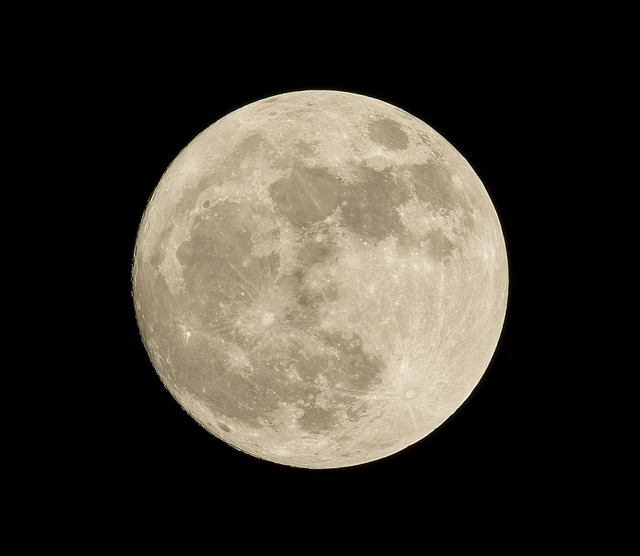On February 22, 2024 — for the first time in over 50 years — an American spacecraft has touched down on the surface of the moon. Among the payloads this robotic, privately-built lunar lander carries is one very special item — an archive of a mosaic called “Whales” by artist Mia Tavonatti.

Whales is one of over 35,000 works of art, music, poetry, writings, theater and more archived in miniature in what’s called The Lunar Codex, the brainchild of Dr. Samuel Peralta. And it is the first mosaic work to be archived on a celestial body.
The Nova-C lander itself — named Odysseus — was built by a private commercial enterprise called Intuitive Machines (IM). Odysseus was carried into space on February 15 from Kennedy Space Center in Florida, atop a SpaceX Falcon 9 rocket.
The lander was developed under NASA’s Commercial Lunar Payload Services (CLPS) contract to help support NASA’s Artemis campaign and commercial development on the moon.
The Lunar Codex contains 35,000 works of art and culture that have been archived from around the world, representing 233 countries, territories and indigenous nations. A majority of the works are by women artists and creators, Tavonatti said. They will remain archived on the moon in miniaturizing formats that are designed to last for thousands of years and withstand temperature and humidity challenges of the moon’s environment. Learn more here: https://www.lunarcodex.com/
Peralta announced, after the news of the successful landing, information about The Lunar Codex and the Artemis Record. “One of the tenets of the Artemis Accords, signed by 36 countries to date, is that of heritage preservation.
“Under Article 6, signatories have committed to preserving humanity’s outer space heritage – specifically sites with historic significance such as human or robotic landings sites, artifacts, spacecraft, and other evidence of human activity on other celestial bodies.
“The Odysseus– including all payloads — is now a de facto Artemis Accords Heritage Site — and all our artworks, writings, music and film on Codex Nova are now part of the designated heritage of humanity, to be preserved for posterity.”
Mosaics on the moon
There was an international contest held in 2020 to select the collections to be sent to the moon. But Tavonatti reached out to Peralta after a friend’s piece was chosen. He was familiar with Tavonatti’s work and personally curated two of her pieces — the Whales mosaic and “Migrazione,” a 2007 oil on canvas painting that is part of her Svelata Collection.


She created her original Whales piece face down in the double-indirect method using glass mosaic. The 48” x 35” piece was installed in a private residence on the island of Maui in Hawaii in 2005.
“I used different kinds of glass tile,” said Tavonatti, from “stained glass, smalti, some Bisazza tile.” Because of the thickness variations, she needed to employ the double-indirect method to create a smooth face of the finished mosaic.
Both of these works are archived using NanoFicheTM technology that compresses images into a 5mm gold-based format or 1um nickel-based format. They are expected to last for at least 10,000 years. Tavonatti’s work can be seen here.
Originally an illustrator and painter, Tavonatti researched mosaic-making 25 years ago when a client asked her to create a series of mosaic murals. “I didn’t even know there was a mosaic world out there,” she said. Today, her work adorns public, private, institutional and corporate collections worldwide. She calls mosaic the “the fastest growing art form in the world…I love the metaphor of mosaics — disparate pieces coming together to create something beautiful. It’s a metaphor for life.”
She adds, “Artists are going to be the last ones on the planet to make things by hand. I am truly honored [for my work] to be archived as part of the human cultural experience in case anything did happen on this planet — to be celebrated and elevated as part of this project. For me, it’s been very surreal.”


“The goal of NASA is to hire commercial companies to bring equipment to the moon in preparation for Artemis to bring humans to the moon…We are preparing for a future on the moon. Maybe aliens will see it and zap it up and say ‘That’s cool.’ Or astronauts may be bored and say, ‘Let’s read some poetry.”
Tavonatti’s sister noted, “I will never look at the moon the same way.” Tavonatti added, “A lander is there and on the lander is this little NanoFiche with my work. It’s there and it’s hopefully forever, even if we lost something here, we would have a record of arts and writings. I’m excited to be part of that.
Whatever civilization encounters these archives in the future, one thing is for sure – Tavonatti’s Whales mosaic will go down in extraterrestrial history as the first work of mosaic tile that has made it to the moon. It’s just one more reason to agree that tile artisanship is out of this world!
Editorial Director and Senior Writer for TileLetter and TileLetter ARTISAN
Lesley Goddin has been writing and journaling since her first diary at age 11. Her journey has taken her through a career in publishing and publicity, landing her the editor position of TileLetter and its special publications in 2006. Her goal is to educate, inspire, recognize and encourage those in the tile industry -- especially the tile and stone contractor.








